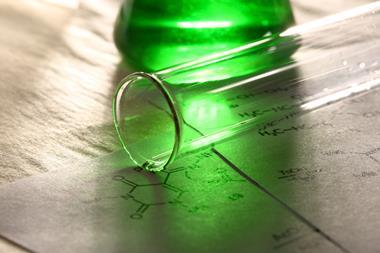Chemistry touches nearly every aspect of our society and economy. It provides us modern luxuries but also modern problems like pollution and toxic waste. In the early 90s a rethink of the kinds of chemical processes and technologies that were possible led to the birth of a new field: green chemistry. This field was built on the belief that society could keep, even enhance, the benefits chemistry has provided while eliminating the downsides.
What’s green chemistry’s origins story?
In the US the Pollution Prevention Act of 1990 laid out a policy for eliminating pollution via better design rather than treatment and disposal. The goal was to focus the attention of industry and the public on the concept of ‘source reduction’. This meant it was more desirable and efficient to prevent pollution than try to contain or clean it up. This involved shifting resources from dealing with toxic waste toward the development of new technologies and chemical processes that met this goal. Things like redesigning products and methods to make them more efficient or substitute scarce or harmful raw materials with feedstocks that are less toxic or produce fewer toxic byproducts throughout their life.
The Pollution Prevention Act allowed the US Environmental Protection Agency (EPA) to be proactive, rather than simply fining polluters and enforcing standards. This shift in priority planted the seeds of green chemistry and by 1991 the agency launched a grant programme funding projects to redesign existing chemical processes and products, making them safer for humans and the environment.
What are the key tenets of green chemistry?
By 1998, a set of 12 guiding principles for the new field were codified in the book Green Chemistry: Theory and Practice by chemists Paul Anastas and John Warner. They defined green chemistry as ‘the design of chemical products and processes that reduce or eliminate the use and generation of hazardous substances’.
The 12 principles of green chemistry
1. Prevention
2. Atom economy
3. Less hazardous chemical syntheses
4. Designing safer chemicals
5. Safer solvents and auxiliaries
6. Design for energy efficiency
7. Use of renewable feedstocks
8. Reduce derivatives
9. Catalysis
10. Design for degradation
11. Real-time analysis for pollution prevention
12. Inherently safer chemistry for accident prevention
These principles helped to focus the minds of chemists on practical challenges like using novel, greener catalysts and renewable feedstocks. They also brought attention to systems design by challenging chemists to think about the entire life cycle of the products they produce. For example, the concept of atom economy asks chemists to account for every atom in a reaction to limit the amount of unwanted byproducts. Principle 11’s insistence on real-time analysis for pollution prevention pushed analytical methods to not only prevent waste but also increase safety.
What happened next?
Green chemistry has been transformed in the last 25 years from a niche field of research and now boasts hundreds of specialised journals, conferences, research centres and awards. The technological advances made by green chemists are not limited to academia either. Innovations born out of a commitment to the 12 principles are now commonplace in industry. These advances increased safety in the chemical industry, spawned entirely new production methods and provided greener alternatives for others.
Some clear examples of its impact are the Nobel prizes awarded for green chemistry. In 2005 the discovery of the catalytic chemical process metathesis took home the chemistry award. Metathesis is the breaking and reformation of carbon double bonds so that chemical groups change places. The reactions are made possible using catalysts in accordance with principle nine. This method led to more efficient and cleaner synthesis for a variety of products and is now routine in the pharmaceutical and plastics industries. In 2021, the chemistry prize went to asymmetric organocatalysis. This development featured the use of simple organic molecules as catalysts, as opposed to metals, allowing more environmentally-friendly syntheses that could be conducted in conditions that enzymes can’t withstand.
Another elegant example comes from a 2021 winner of the EPA’s annual Green Chemistry Challenge. The team from Clemson University developed a method to replace a carcinogenic component of polyurethane foam, diisocyanates, with lignin. Polyurethane foams are ubiquitous in industry and the lignin-based version performs just as well but is recyclable, requires fewer fractionation and purification steps and is made using a recyclable catalyst, potassium carbonate. The method also uses a vegetable oil-derived curing agent to convert lignin to a reactive precursor, a process that formerly involved two carcinogens, propylene oxide and diisocyanates.
What does the future hold for green chemistry?
Green chemistry innovations are slowly replacing legacy production methods and have had a huge impact on the cleanliness and safety of the chemical industry. But according to green chemists like Anastas, the next step requires an increased awareness of the connections between the 12 principles. A bigger picture approach to the chemical sciences will change green chemistry from its own field to simply the only way that chemistry is done.












1 Reader's comment